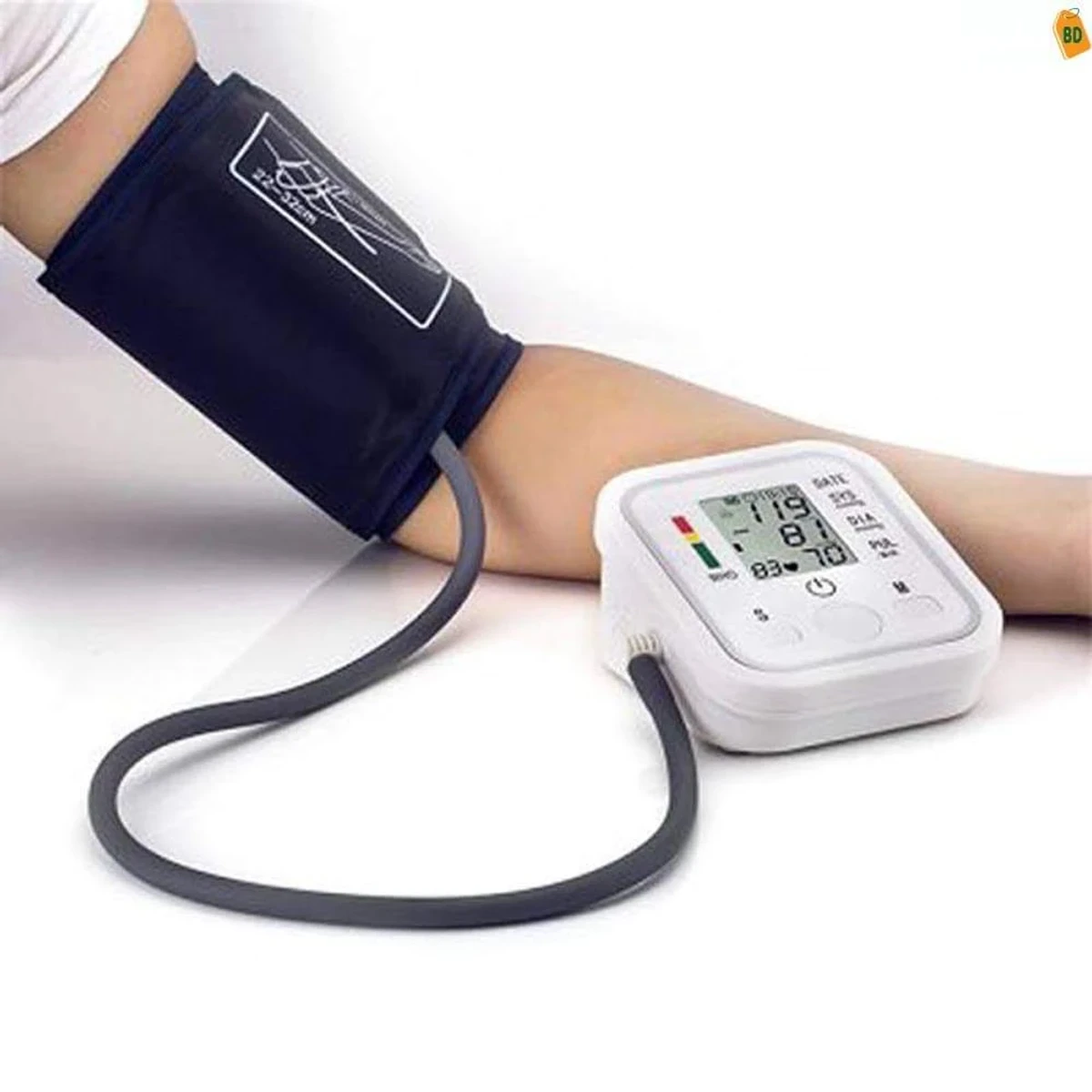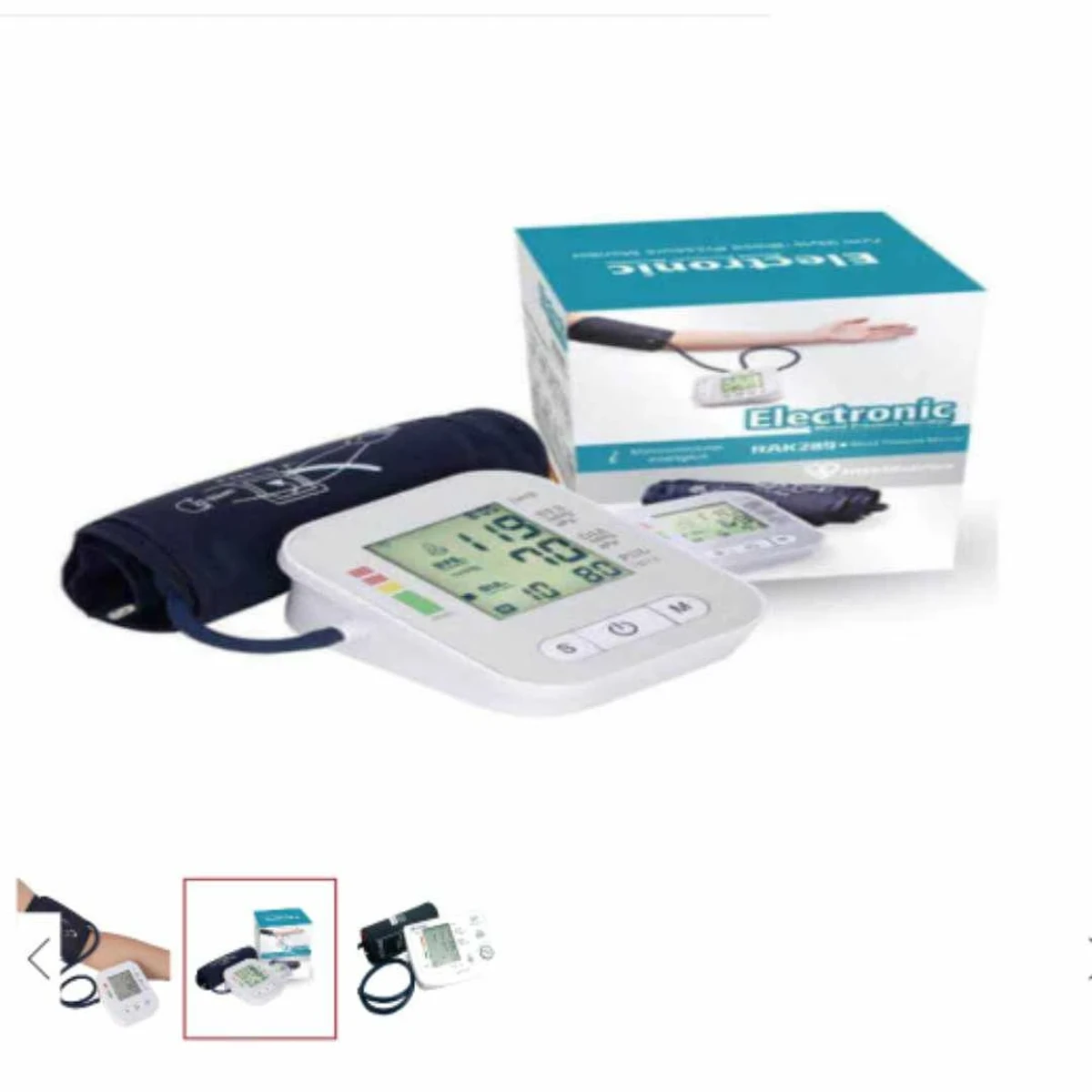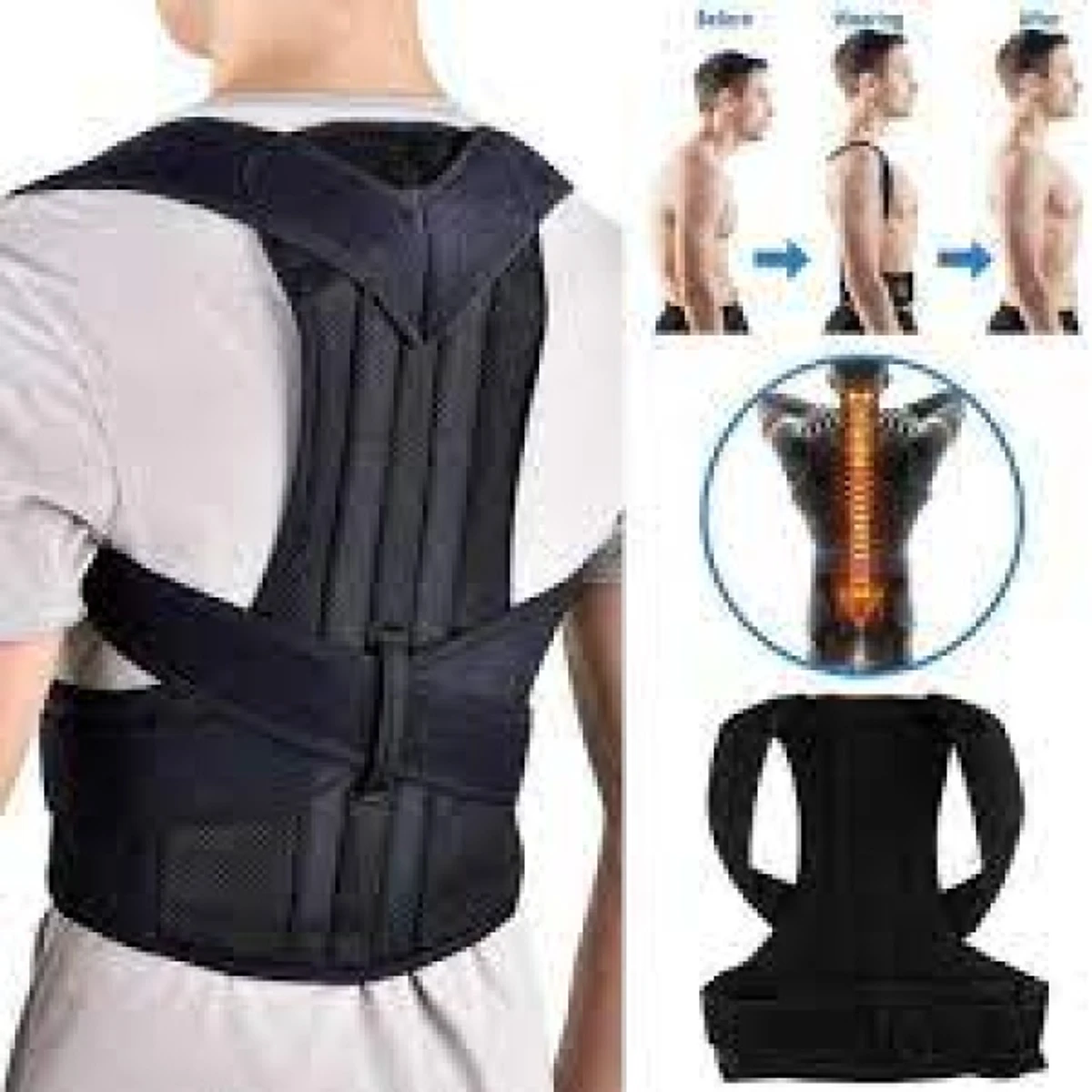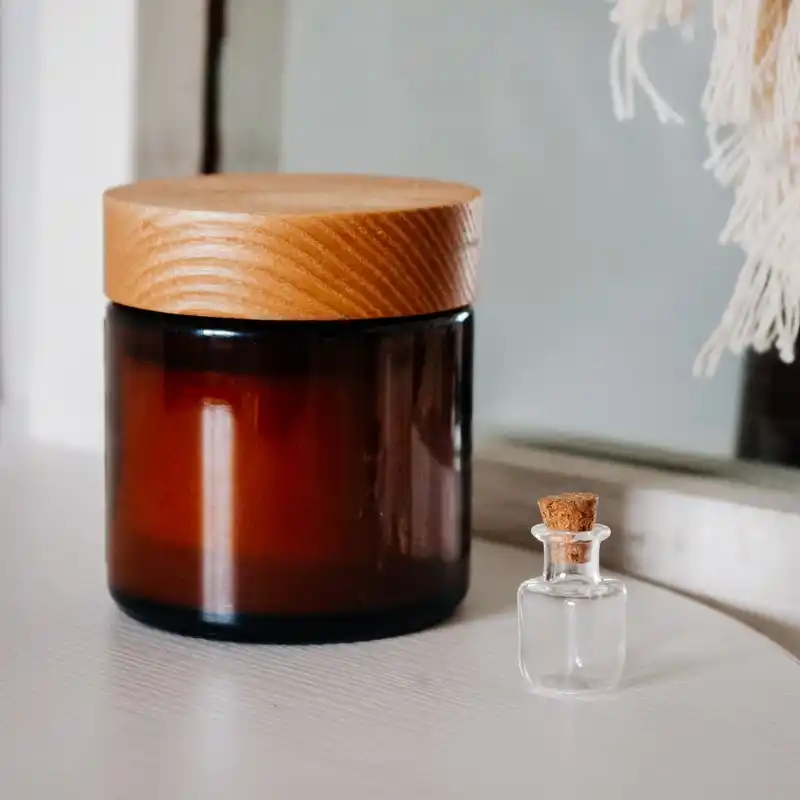


Blood Pressure Monitoring Machine
- Status: Stock In
Blood Pressure Monitoring Machine Digital Blood Pressure Monitoring Machine : It is common for people to monitor their blood pressure at home. They may need to do this to manage or treat a certain condition. If you do this, you should keep a record, or log, of the measurements. The record shows your doctor how your blood pressure changes throughout the day. If you take medicines to control your blood pressure, it will help document if they are working. Measuring your blood pressure at home is a good way to take part in managing your health. Path to improved health What equipment do I need to measure my blood pressure at home? To measure your blood pressure at home, you can use either an aneroid monitor or digital monitor. Choose the type of monitor that best suits your needs. You should look at the following features when you select a monitor. Size: The right cuff size is very important. The cuff size you need is based on the size of your arm. You can ask the doctor, nurse, orpharmacist to help you. Blood pressure readings can be wrong if your cuff is the wrong size. Price: Cost may be a key factor. Home blood pressure units vary in price. You may want to shop around to find the best deal. Keep in mind that pricey units may not be the best or most accurate. Display: The numbers on the monitor should be easy for you to read. Sound: You must be able to hear your heartbeat through the stethoscope. Tests show that finger and wrist devices do not always get correct measurements. These devices are very sensitive to placement and body temperature. They also are expensive and can cost more than $100. Aneroid monitor The aneroid monitor manually checks your blood pressure. It has a gauge that you read by looking at a pointer on the dial. The cuff goes around your upper arm and you squeeze a rubber bulb to inflate it by hand. Aneroid monitors often cost less than digital monitors. They range in price from about $20 to $40. The cuff has a built-in stethoscope, so you don’t need to buy a separate one. The unit may have a feature that makes it easy to put the cuff on with one hand. It also is portable and can be carried easily from one place to another. There are some drawbacks to the aneroid monitor. It is a complex device that can be damaged easily and become less accurate. The device may be hard to use if it doesn’t have a metal ring, which makes it easier to put on the cuff. In addition, the rubber bulb that inflates the cuff may be hard to squeeze. This type of monitor may not be best for hearing-impaired people, because of the need to listen to your heartbeat through the stethoscope. Digital monitor Digital monitors are more popular for measuring blood pressure. They often are easier to use than aneroid units. The digital monitor has a gauge and stethoscope in one unit. It also has an error indicator. The blood pressure reading displays on a small screen. This may be easier to read than a dial. Some units even have a paper printout that gives you a record of the reading. Inflation of the cuff is either automatic or manual, depending on the model. Deflation is automatic. Digital monitors are good for hearing-impaired patients, since there is no need to listen to your heartbeat through the stethoscope. There are some drawbacks to the digital monitor. Body movements or an irregular heart rate can affect its accuracy. Some models only work on the left arm. This can make them hard for some patients to use. Digital monitors are more expensive. They range in price from about $30 to more than $100. They also require batteries. How do I know if my monitor is accurate or if I am using it correctly? Once you buy your device, have your doctor check it for accuracy. They should check your monitor once a year. On your own, periodically check the tubing for cracks and leaks. Proper care and storage are necessary. Make sure the tubing is not twisted when you store it. Keep it away from heat. Ask your doctor or nurse to teach you how to use your blood pressure monitor correctly. This will help you achieve good results in controlling your blood pressure. How do I measure my blood pressure? Before you check your blood pressure, you should: Wait 30 minutes after eating or using caffeine, alcohol, or tobacco products. Go to the bathroom and empty your bladder. Rest for 3 to 5 minutes and do not talk. Sit in a comfortable position, with your legs and ankles uncrossed and your back supported. Elevate your left arm to the level of your heart. Place it on a table or desk and sit still. Wrap the cuff around the upper part of your bare arm. The cuff should be smooth and snug. There should be enough room for you to slip one fingertip under the cuff. Check the placement of the cuff. The bottom edge of it should be 1 inch above the crease of your elbow. Below are the steps to take to use an aneroid monitor. Put the stethoscope earpieces into your ears. The earpieces should face forward. Place the stethoscopedisk on the inside of the crease of your elbow. Inflate the cuff by squeezing the rubber bulb. Keep squeezing until the pointer on the dial reaches 30 to 40 points higher than your last systolic reading. The systolic reading is the top number of blood pressure. Inflate the cuff at a rapid rate, not just a little at a time. Inflating the cuff too slowly will cause a false reading. Slightly loosen the valve on the unit and slowly let some air out of the cuff. Deflate the cuff by 2 to 3 millimeters per second. If you loosen the valve too much, you won’t be able to measure your blood pressure. As you let the air out of the cuff, you will begin to hear your heartbeat. Listen carefully for the first sound. Check the blood pressure reading by looking at the pointer on the dial. This number is your systolic pressure. Continue to deflate the cuff. Listen to your heartbeat. You will hear your heartbeat stop at some point. Check the reading on the dial. This number is your diastolic pressure. Write down the measurement in your record. The systolic pressure goes in front of the diastolic pressure. For example, 120/80. If you need to repeat the measurement, wait 2 to 3 minutes before starting. Below are the steps to take to use a digital monitor. Turn the power on to start the unit. On the automatic models, the cuff will inflate by itself with a push of a button. On the manual models, you have to inflate the cuff. You do this by squeezing the rubber bulb at a rapid rate. After the cuff inflates, the automatic device will slowly let air out. Look at the display screen to get your blood pressure reading. It will show your systolic and diastolic pressures. Write down the measurement in your record. The systolic pressure goes in front of the diastolic pressure. For example, 120/80. Press the exhaust button to release all of the air from the cuff. If you need to repeat the measurement, wait 2 to 3 minutes before starting. Things to consider What does my blood pressure reading mean? Normal blood pressure is 120/80 or lower. High blood pressure is 140/90 or higher. If your blood pressure is between 120/80 and 140/90, you may have something called prehypertension. This means that you are at risk for high blood pressure.
Product Description
Blood Pressure Monitoring Machine
Digital Blood Pressure Monitoring Machine :
It is common for people to monitor their blood pressure at home. They may need to do this to manage or treat a certain condition. If you do this, you should keep a record, or log, of the measurements. The record shows your doctor how your blood pressure changes throughout the day. If you take medicines to control your blood pressure, it will help document if they are working. Measuring your blood pressure at home is a good way to take part in managing your health.
Path to improved health
What equipment do I need to measure my blood pressure at home?
To measure your blood pressure at home, you can use either an aneroid monitor or digital monitor. Choose the type of monitor that best suits your needs. You should look at the following features when you select a monitor.
Size: The right cuff size is very important. The cuff size you need is based on the size of your arm. You can ask the doctor, nurse, orpharmacist to help you. Blood pressure readings can be wrong if your cuff is the wrong size.
Price: Cost may be a key factor. Home blood pressure units vary in price. You may want to shop around to find the best deal. Keep in mind that pricey units may not be the best or most accurate.
Display: The numbers on the monitor should be easy for you to read.
Sound: You must be able to hear your heartbeat through the stethoscope.
Tests show that finger and wrist devices do not always get correct measurements. These devices are very sensitive to placement and body temperature. They also are expensive and can cost more than $100.
Aneroid monitor
The aneroid monitor manually checks your blood pressure. It has a gauge that you read by looking at a pointer on the dial. The cuff goes around your upper arm and you squeeze a rubber bulb to inflate it by hand.
Aneroid monitors often cost less than digital monitors. They range in price from about $20 to $40. The cuff has a built-in stethoscope, so you don’t need to buy a separate one. The unit may have a feature that makes it easy to put the cuff on with one hand. It also is portable and can be carried easily from one place to another.
There are some drawbacks to the aneroid monitor. It is a complex device that can be damaged easily and become less accurate. The device may be hard to use if it doesn’t have a metal ring, which makes it easier to put on the cuff. In addition, the rubber bulb that inflates the cuff may be hard to squeeze. This type of monitor may not be best for hearing-impaired people, because of the need to listen to your heartbeat through the stethoscope.
Digital monitor
Digital monitors are more popular for measuring blood pressure. They often are easier to use than aneroid units. The digital monitor has a gauge and stethoscope in one unit. It also has an error indicator. The blood pressure reading displays on a small screen. This may be easier to read than a dial. Some units even have a paper printout that gives you a record of the reading.
Inflation of the cuff is either automatic or manual, depending on the model. Deflation is automatic. Digital monitors are good for hearing-impaired patients, since there is no need to listen to your heartbeat through the stethoscope.
There are some drawbacks to the digital monitor. Body movements or an irregular heart rate can affect its accuracy. Some models only work on the left arm. This can make them hard for some patients to use. Digital monitors are more expensive. They range in price from about $30 to more than $100. They also require batteries.
How do I know if my monitor is accurate or if I am using it correctly?
Once you buy your device, have your doctor check it for accuracy. They should check your monitor once a year. On your own, periodically check the tubing for cracks and leaks. Proper care and storage are necessary. Make sure the tubing is not twisted when you store it. Keep it away from heat.
Ask your doctor or nurse to teach you how to use your blood pressure monitor correctly. This will help you achieve good results in controlling your blood pressure.
How do I measure my blood pressure?
Before you check your blood pressure, you should:
Wait 30 minutes after eating or using caffeine, alcohol, or tobacco products.
Go to the bathroom and empty your bladder.
Rest for 3 to 5 minutes and do not talk.
Sit in a comfortable position, with your legs and ankles uncrossed and your back supported.
Elevate your left arm to the level of your heart. Place it on a table or desk and sit still.
Wrap the cuff around the upper part of your bare arm. The cuff should be smooth and snug. There should be enough room for you to slip one fingertip under the cuff.
Check the placement of the cuff. The bottom edge of it should be 1 inch above the crease of your elbow.
Below are the steps to take to use an aneroid monitor.
Put the stethoscope earpieces into your ears. The earpieces should face forward.
Place the stethoscopedisk on the inside of the crease of your elbow.
Inflate the cuff by squeezing the rubber bulb. Keep squeezing until the pointer on the dial reaches 30 to 40 points higher than your last systolic reading. The systolic reading is the top number of blood pressure. Inflate the cuff at a rapid rate, not just a little at a time. Inflating the cuff too slowly will cause a false reading.
Slightly loosen the valve on the unit and slowly let some air out of the cuff. Deflate the cuff by 2 to 3 millimeters per second. If you loosen the valve too much, you won’t be able to measure your blood pressure.
As you let the air out of the cuff, you will begin to hear your heartbeat. Listen carefully for the first sound. Check the blood pressure reading by looking at the pointer on the dial. This number is your systolic pressure.
Continue to deflate the cuff. Listen to your heartbeat. You will hear your heartbeat stop at some point. Check the reading on the dial. This number is your diastolic pressure.
Write down the measurement in your record. The systolic pressure goes in front of the diastolic pressure. For example, 120/80.
If you need to repeat the measurement, wait 2 to 3 minutes before starting.
Below are the steps to take to use a digital monitor.
Turn the power on to start the unit.
On the automatic models, the cuff will inflate by itself with a push of a button. On the manual models, you have to inflate the cuff. You do this by squeezing the rubber bulb at a rapid rate.
After the cuff inflates, the automatic device will slowly let air out.
Look at the display screen to get your blood pressure reading. It will show your systolic and diastolic pressures. Write down the measurement in your record. The systolic pressure goes in front of the diastolic pressure. For example, 120/80.
Press the exhaust button to release all of the air from the cuff.
If you need to repeat the measurement, wait 2 to 3 minutes before starting.
Things to consider
What does my blood pressure reading mean?
Normal blood pressure is 120/80 or lower. High blood pressure is 140/90 or higher. If your blood pressure is between 120/80 and 140/90, you may have something called prehypertension. This means that you are at risk for high blood pressure.







